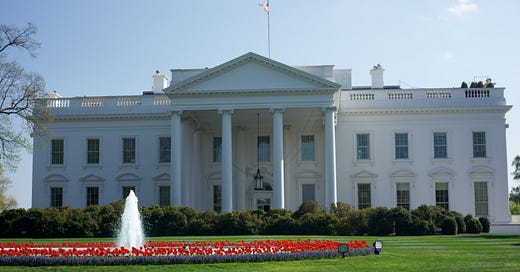The White House Releases Its FY 2023 Budget Request
Photo from Flickr by Julian Fong
Subscribe today for all the material posted on The Wavelength. Subscriptions are available for $250 a month and less for an annual subscription. I think you'll find the value to cost ratio is high with The Wavelength.
You can find previously posted content on technology policy, politics, and law on my blog.
United States (U.S.) President Joe Biden sent his FY 2023 budget request to Congress today, which is the customary start of the public part of determining what next year’s funding will be. Of course, executive branch agencies have been working on this budget since last spring, and the administration missed the statutory deadline of early February because Congress had not yet agreed on FY 2022 appropriations. Now that the current year’s funding has been dispensed with, the next year’s budget was released.
As there are significant odds of the Republicans taking control of Congress next year, it would not be unprecedented if the same happens with FY 2023 and a final package is not agreed upon until well in March 2023. Moreover, even if Democrats retain control of the House and Senate, the filibuster gives Republicans in the latter chamber considerable sway over a final budget package. As a result, some of the more ambitious funding proposals are likely to come to naught.
Be that as it may, the White House is asking Congress for $1.598 trillion in appropriated funds with $813 billion being allocated for defense programs and $650 billion for non-defense programs. For the current fiscal year, Congress settled on $1.555 trillion with $782 billion for defense and $594 billion for non-defense. It bears some emphasis, this shift back to more defense funding than non-defense programs flips last year’s budget request when the White House requested more for domestic programs for the first time in recent memory (see here.)
Subscribe to read the rest on The Wavelength on Ghost.




